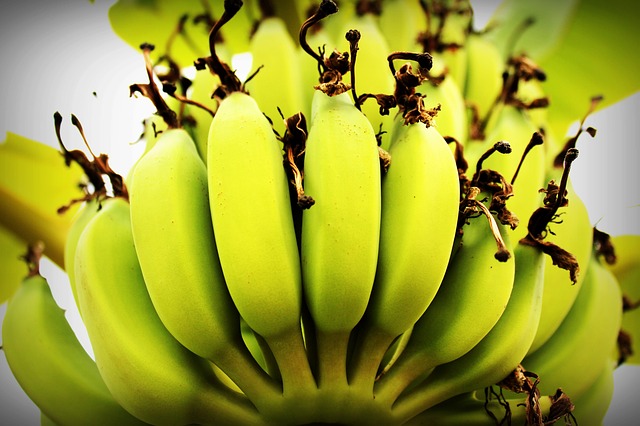The Collateral Damage of Conventional Banana Farming.
~ Robbie Stout
All my life I’ve been pretty selfish, but I’ve always meant well.
It’s impossible to be a competitive athlete – in my case riding bikes and (formerly) running – without being at least a little bit selfish. This is something you’ll hear out of every humble athlete’s mouth at sometime or another.
For me, buying organic has always been about the health benefits and avoiding the dangers of pesticides. I’ve been keen on organic animal products after a short stint of animal rights-based veganism in high school.
Eating organic has been one way I’ve worked to achieve that last 1% of top-end fitness.
Crop Dusting Humans
But the collateral damage of conventional farming never occurred to me until a recent hunt for cacao beans led me to Costa Rica.
Driving down a bumpy dirt road between two plots of banana farms, my partner and I noticed that a plane was crop dusting overhead. Just ahead was a farmer carting bananas on an automated line from one side of the road to the other, and we had passed several locals commuting by bike along the same road.
Just after the plane flew by, a sudden splat of some sort of liquid splashed the windows of our van. We had to use the windshield wipers to clean whatever pesticide or chemical substance had just blurred our vision and landed on the other people on the road and working in the field.
The lesson here is clear. In the case of bananas, conventional farming methods equates to farmhands, nearby towns and even passersby being affected by the use of potentially dangerous fertilizers and pesticides. My gut instinct tells me that there is no alternating schedule for when farmers are in the field and when the same field is being crop dusted. I’m no organic farming expert but I don’t imagine that long-term exposure to chemicals that are designed to kill insects can be some sort of health benefit for human life.
In addition, irresponsible farming practices often make it impossible for nearby organic farms to become certified organic. Through some of the cacao cooperatives and associations that we visited, we learned that some cacao farmers could not become certified organic because they were too close to a conventional banana farm, even though they were farming organically.
The Blue Bags
An adopted method for conventional banana farming includes the covering of every banana bunch with a blue bag for protecting the bananas from insects as they mature. However, I can tell you from experience that not all of these bags are collected during harvest.
While riding in a canoe up the Coen River in southern Costa Rica, once again to visit some indigenous cacao farmers, we passed several banana farms that lined the banks of the river. Hard working locals had the task of removing all of the blue plastic bags and transporting piles of banana via canoe, from one side of the river to the other. We saw piles of these blue plastic bags awaiting pick up, and even some that had wandered off. A local that we were traveling with said that it was a common sight to see the river banks lined with these blue plastic bags.
Banana farming along this particular river presents two problems. Stray, chemical ridden plastic bags that make it into the river present a danger to not only the fish, but also to the coral reefs near Boca del Rio Sixaola, where the river enters the Caribbean. And of course, using pesticides so close to a drainage basin allows for the chemicals to spread quickly downstream, poisoning the river’s ecosystem above and below the water.
On a final note, Costa Rica is one of the most genetically diverse countries in the world with hundreds of bird species and other insects and animals that you’re not likely to find anywhere else. And many of these unique and endangered species make their home on banana farms, which means if it’s not organic, they’re exposed to the fertilizers and pesticides too.
The Message
In this case, if you’re going to buy bananas, buy organic and Rainforest Alliance Certified if possible. Buying organic isn’t just about your health—it’s about the livelihood of the farmers, nearby communities and the ecosystems that may be affected by conventional farming practices.
Photos: Robbie Stout

Here’s a conventional banana farm along the shore of the Coen River in southern Costa Rica. Check out the blue plastic bags in the trees and on the ground. And those cows feed on grass that most likely receives some of the over sprayed fertilizers and pesticides

Laborers transport bananas from one side of the river to the other. These bananas will be used as ingredients in food such as baby food. If these were for eating raw, they would be treated more delicately so as to prevent bruising

A local farmer sits on one side of the river to watch over the pile of fresh bananas awaiting pick up via canoe

It’s a shame that conventional banana farms are allowed to use pesticides and chemicals right along the shore of a river that is a life source for nearby families

Here you can see the size and scope of just one banana field in southern Costa Rica (which requires a lot of blue plastic bags and chemicals for upkeep)

This two-toed sloth is one of about 50 sloths on this organic cacao farm in Costa Rica – talk about sustainability
Top Photo: Pixabay.

 Share on bsky
Share on bsky










Read 21 comments and reply